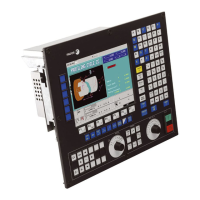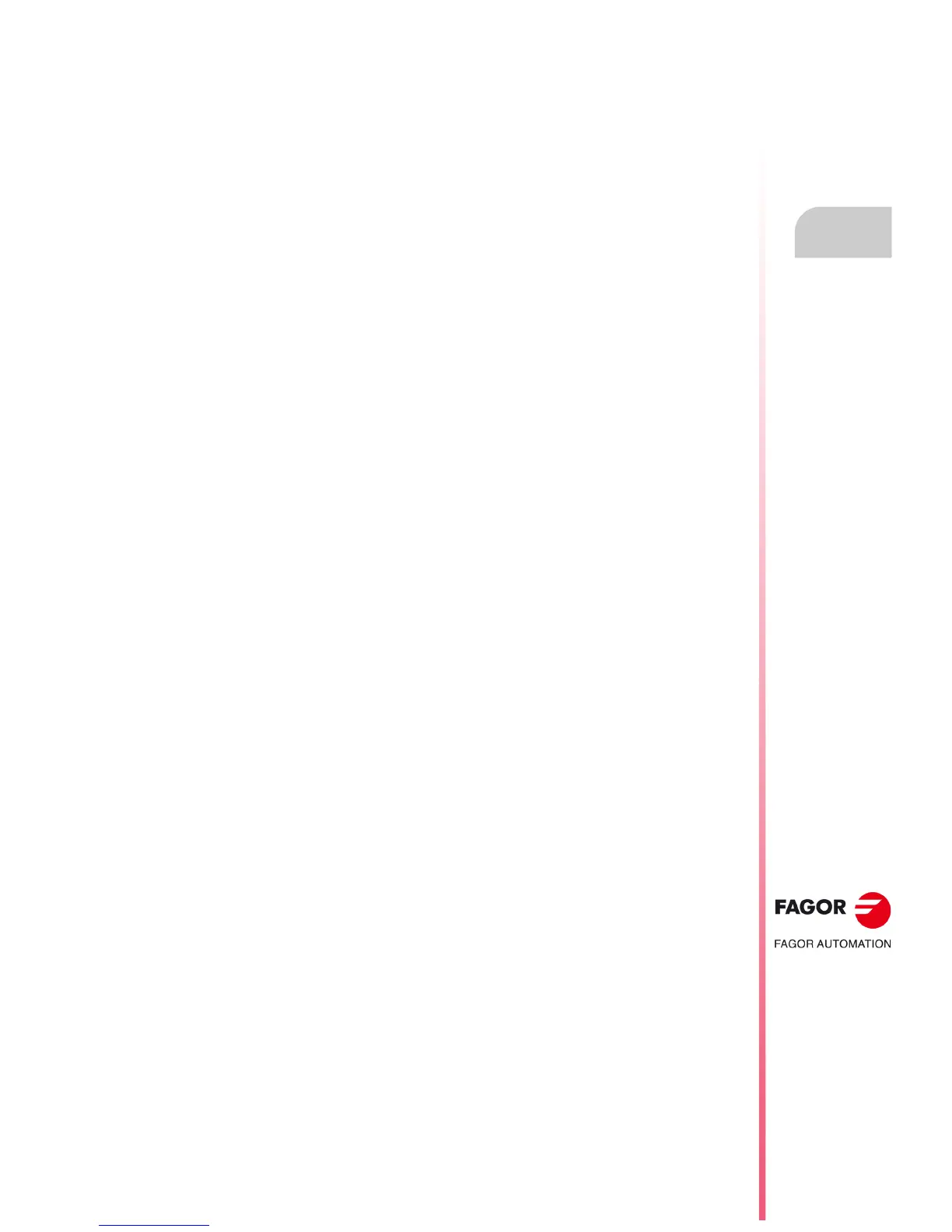Operating manual
CNC 8055
CNC 8055i
DIAGNOSIS
13.
·T· MODEL
SOFT: V02.2X
·231·
Adjustments
Trigger conditions
The following data is available to define the trigger conditions.
• Channel
It indicates which variable or channel (CH1, CH2, CH3, CH4) is to be used as reference or trigger
condition.
• Trigger
It indicates when the data capture begins. When selecting a trigger, the trigger condition must
be specified with the "flank", "level" and "position" data.
If not selected, the data capture begins when the user gives the command to begin (the "flank",
"level" and "position" data is ignored).
•Flank
It is taken into account when the trigger has been selected. It may be up-flank (leading edge)
or down-flank (trailing edge).
With an up flank, the data capture begins when in a sample the data value is lower than the level
and in the next sample the value is greater than or equal to the level.
With a down flank, the data capture begins when in a sample the data value is greater than the
level and in the next sample the value is lower than or equal to the level.
•Level
It is taken into account when the trigger has been selected.
It sets the value to be assumed by the variable to start capturing data.
• Position (%)
It is taken into account when the trigger has been selected. It is defined as a percentage, between
0% and 100%.
It indicates the number of samples to be taken before the trigger. For example, a 10% position
indicates that 10% of the total number of programmed samples will be taken before the trigger
and the remaining 90% after that instant.
The trigger condition starts evaluating after having the indicated % of samples. If the position
is defined as 50% and the trigger condition takes place after taking 10% of the samples, it is
ignored until capturing 50% of the samples.
• Number of samples
It indicates the number of sample to be captured. It is common to all the channels. Value between
1 and 1024.
The sample will be taken at the same time in all the channels so they are synchronized.
• Sampling T
It indicates the sampe period or the time period between data captures. It is given in milliseconds,
integers between 1 and 1000 (between 1ms and 1s).
When analyzing CNC variables, the sample period must be a multiple of the loop time. If it is
not, a message is displayed indicating that the sampling period has been automatically rounded
off.
The sample time may be shorter than the CNC loop time only when analyzing 1 or 2 variables
of the same drive.
When the requested number of variables forces a reconfiguration of the CNC's Sercos or CAN
interface, a warning message is issued requesting its confirmation.
•Mode
It indicates the type of data capture, single or continuous.
With "single" capture, the process ends when the specified number of samples has been taken
or when interrupted by the user.
In continuous capture mode, when the trace fills up the screen, the capture goes on except if
the trigger has triggered; in that case the trace of the trigger remains until a new trigger is
activated. The process goes on like that indefinitely until the user stops it.

